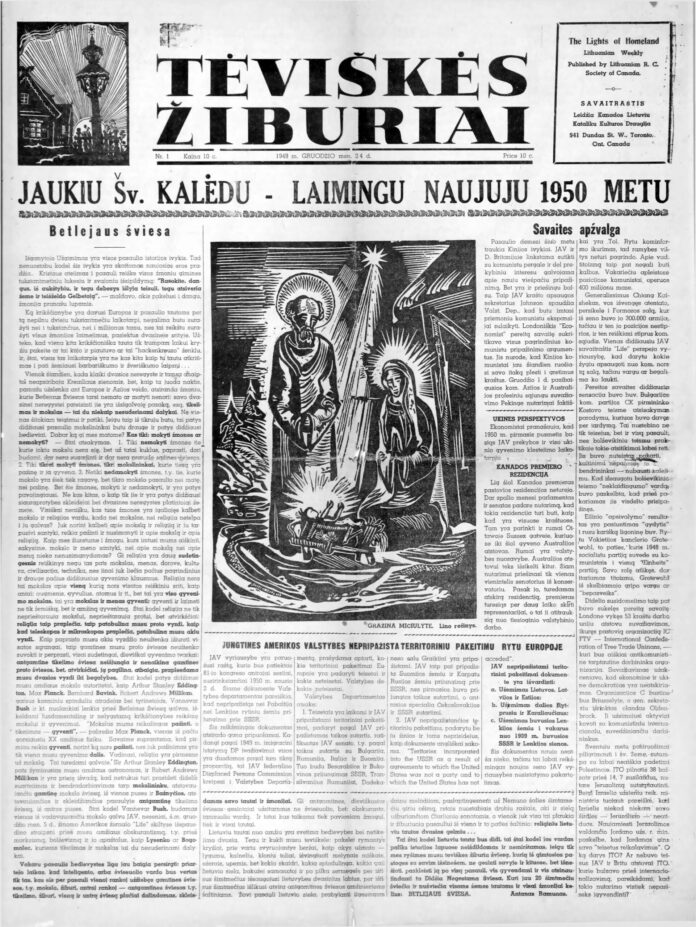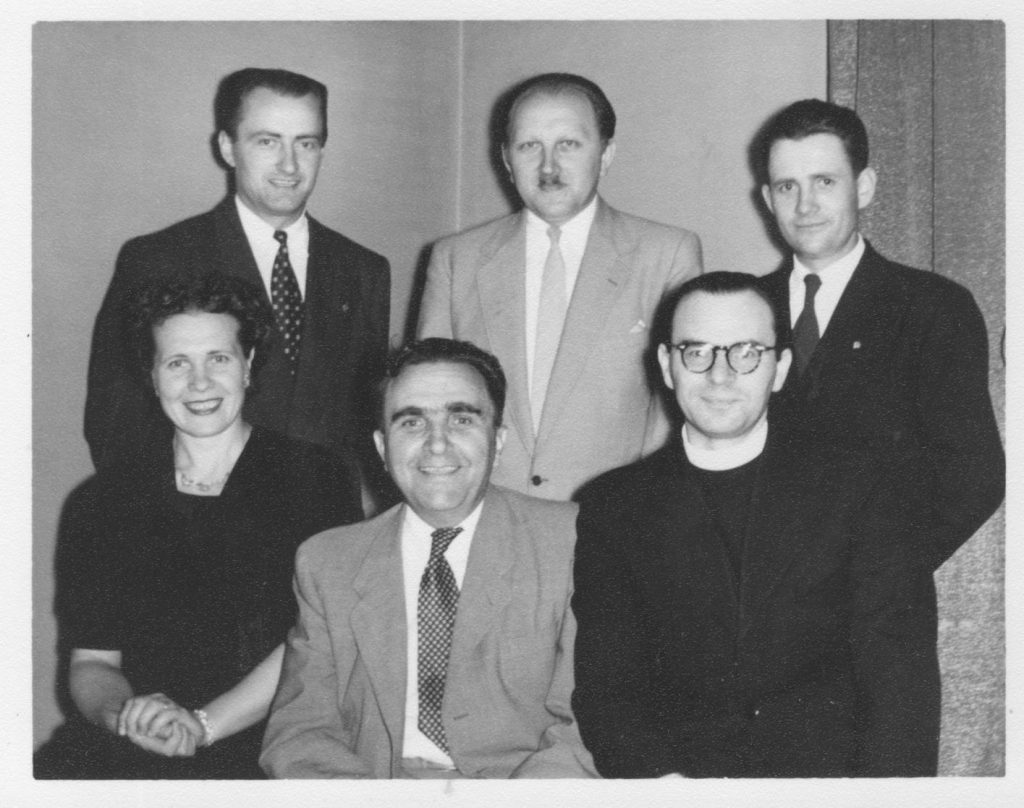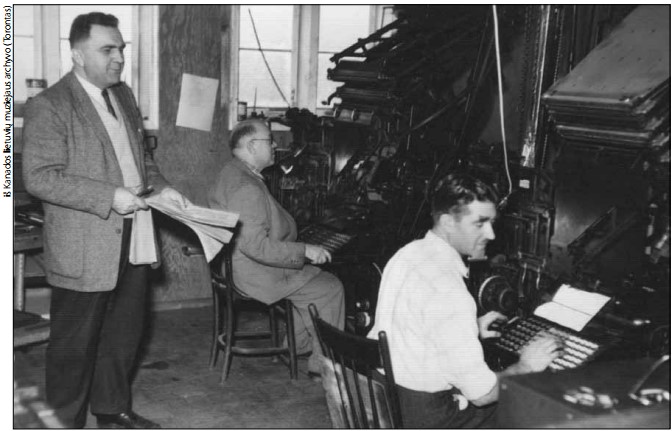
This is the first of a series of articles outlining the 75-year history of the newspaper “Tėviškės žiburiai” – The Lights of Homeland, established in Toronto, Canada, in 1949.
Many memoirs have been written about the hardships, successes, and self-sacrifices of Lithuanians who endured and escaped WW2. They created a new community in a totally foreign environment. It was a tiny replica of their homeland, meant to be a base where they could belong, teach their children, and work toward their nation’s freedom from Soviet oppression. One of those endeavours was a crucial platform for communication among the multiple communities, organizations and parishes that sprang up almost immediately. It was a weekly newspaper called The Lights of Homeland, and it became the story of the Lithuanian Community in Canada.
Some of the earlier Lithuanian settlers – the first wave, or “old-timers”, as they were called, were welcoming and helpful to the post-war DP’s or Displaced Persons, as they were called in refugee camps in Germany and Austria, where they had sheltered from the Soviet occupation of their country and mass deportations to Siberia. Others, influenced by reigning liberal tendencies, were critical of the new immigrants, who were largely christian-democrat conservative professionals and intellectuals. With each side entrenched in their views, forming a unified Lithuanian Community was difficiult, and the umbrella organization (KLB) did not officially materialize until 1952. Although there was a Lithuanian newspaper being published in Montreal, Quebec, due to conflicts with the editorial policy at the time, the aspirations of the newcomers were not met and the need for a separate newspaper became obvious as early as 1949.

A group of 16 activists met in September of that year in the rectory of the first Lithuanian parish in Toronto (St. John the Baptist, at 941 Dundas St. W.), to discuss the issue. After extensive deliberation, they decided to establish a newspaper based in Toronto. A committee of seven was struck to initiate the project: P. Alekna, B. Sakalauskas-Sakalas, V. Užupis, Dr. A. Juozapavičius-Juzaitis, Dr. S. Čepas, Rev. P. Ažubalis and Dr. E. Jasinevičiūtė. The committee was charged with exploring the possibilities of publishing a newspaper, establishing a printing company with shareholders, and engaging historian Dr. A. Šapoka who then lived in Montreal, Quebec, as editor. B. Sakalas was appointed President, financials were taken on by V. Užupis, and Dr. Juzaitis was administrator.
The first logo was designed by artist Alfonsas Docius, and replaced with Telesforas Valius’ art and lettering in the early 1960’s. During the publication’s first year, it was printed by an outside print shop, where no one was equipped to set type in Lithuanian.
The first order of business was financing. The newspaper’s initiators were Catholics, and mostly members of an organization called “Ateitininkai”, which had nurtured patriotic leadership in Lithuania after its rebirth as a nation following 160 years of Czarist rule. In Toronto, they turned to the North American Union of Lithuanian Clergy for support. At a meeting in the fall of 1949, the committee officially became the publishing body, called the Lithuanian R.C. Cultural Society “Žiburiai”. The pastors at the conference were the first to donate several hundred dollars each, and with others contributing lesser sums, they managed to collect $2,000. This was far from sufficient to begin publication.

Yet they managed to produce the first issue of the newspaper, “Tėviškės žiburiai” (as named by editor Šapoka) on Christmas Eve of 1949. It was a great accomplishment for the idealistic founders, new immigrants yearning for a place to express their views without conflict.
The publishers assigned A. Bajorinas and J. Mažeika to solicit advertising for the newspaper, but even with subscriptions, printing costs could not be covered for very long. Other Lithuanian Catholic organizations were approached, and the Toronto chapter of the Society also worked hard to bring in another $1,000 by means of picnics, plays and dances. A bookstore was organized in the summer of 1950. By the end of 1950, the Society had $13,000 to work with.
That year, a printing company was established to provide income for the publication, under the leadership of Antanas Rinkūnas. “Žiburiai – The Lights Printing and Publishing Co. Ltd.”, was registered on November 23, 1950, and by selling shares to Lithuanians garnered several thousand dollars within a month. The Christmas issue of 1950 was printed on their own presses.





























